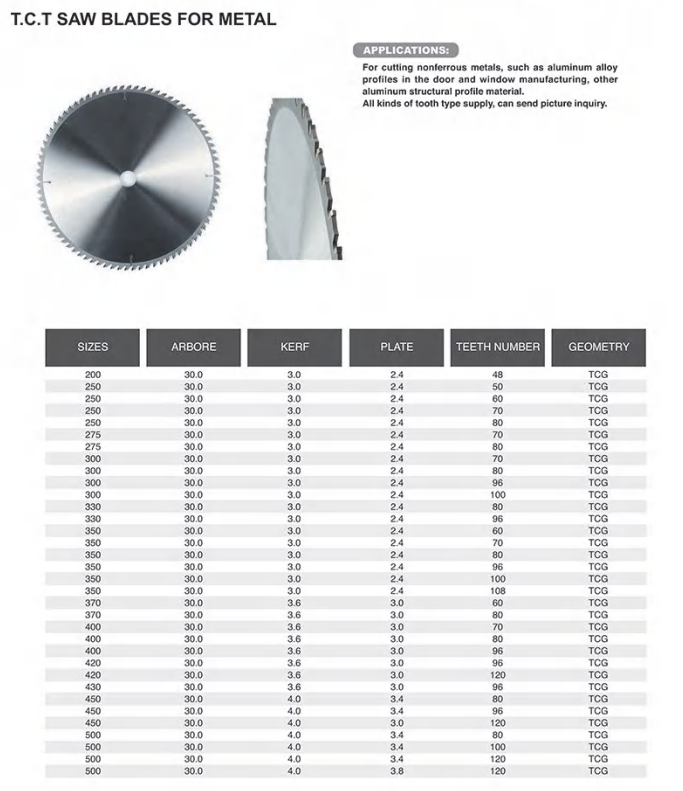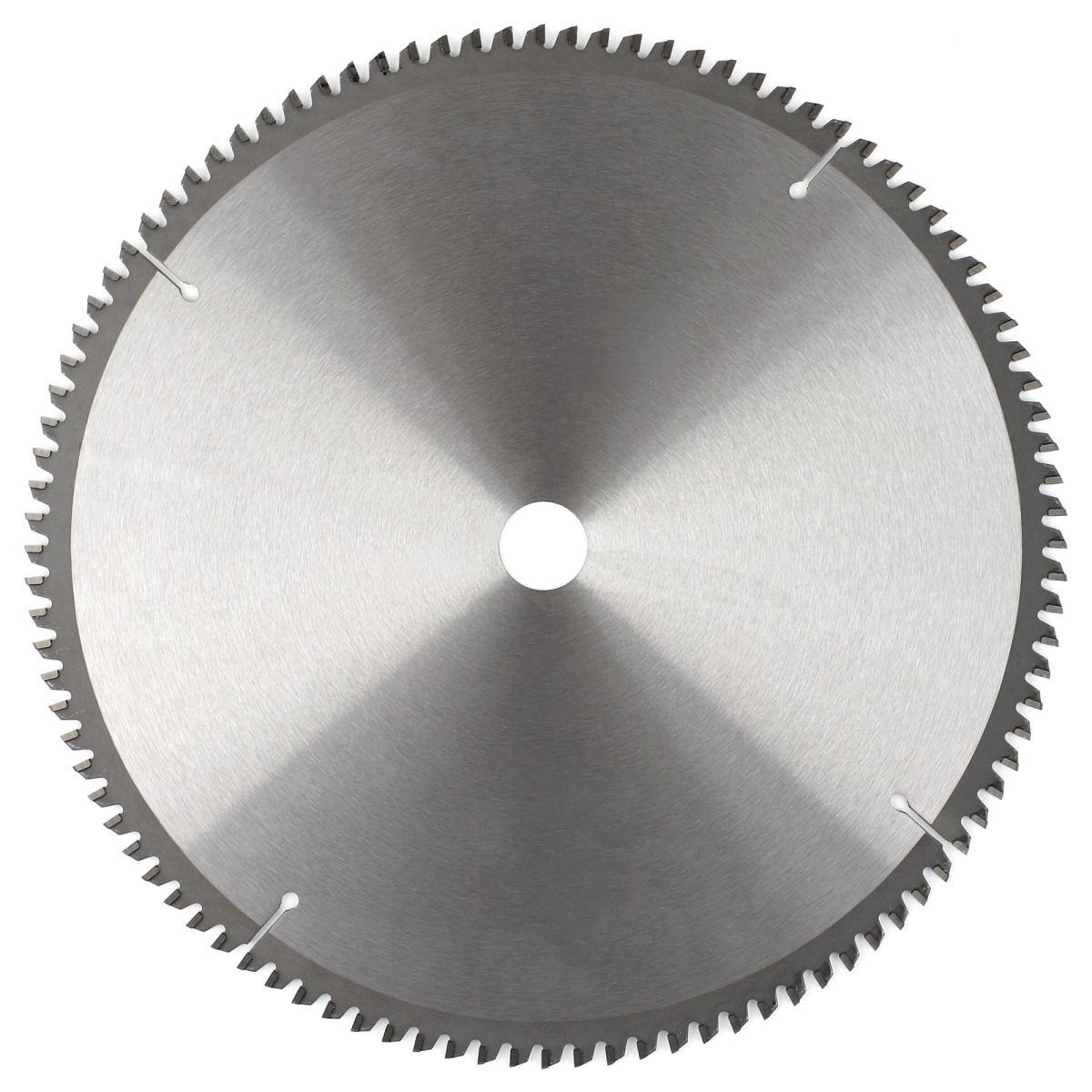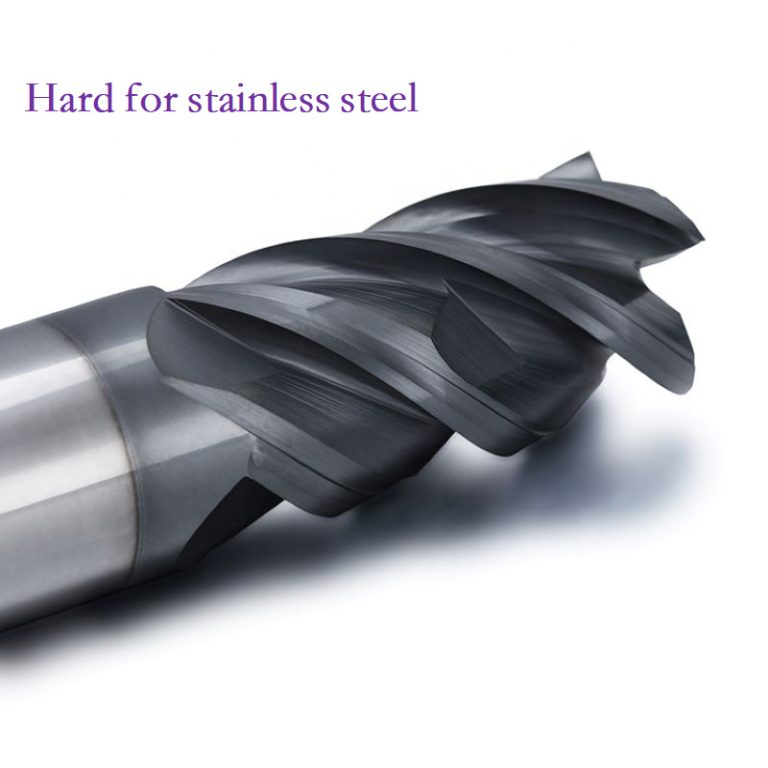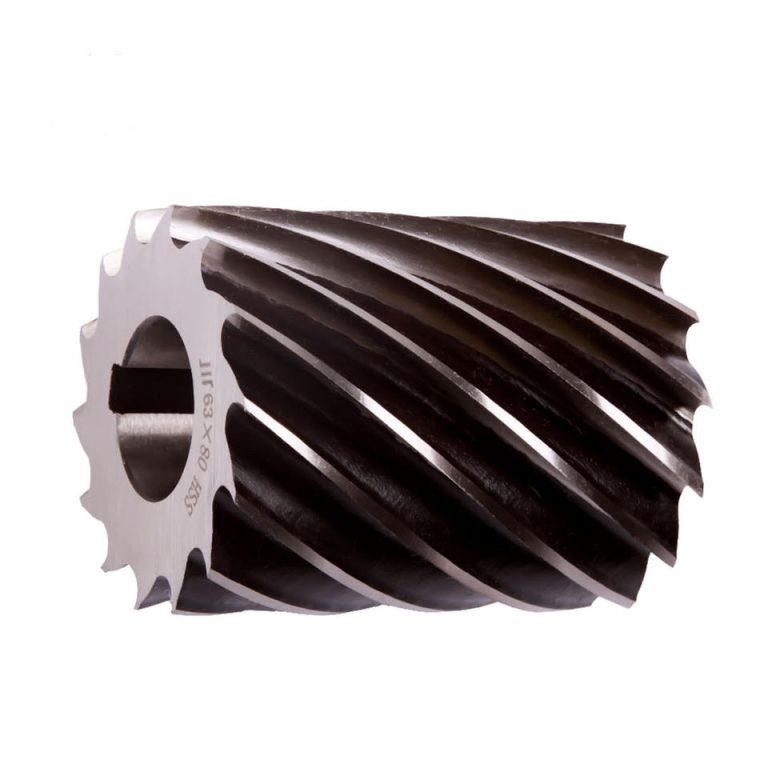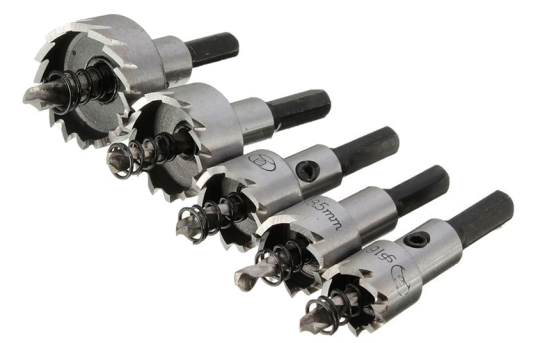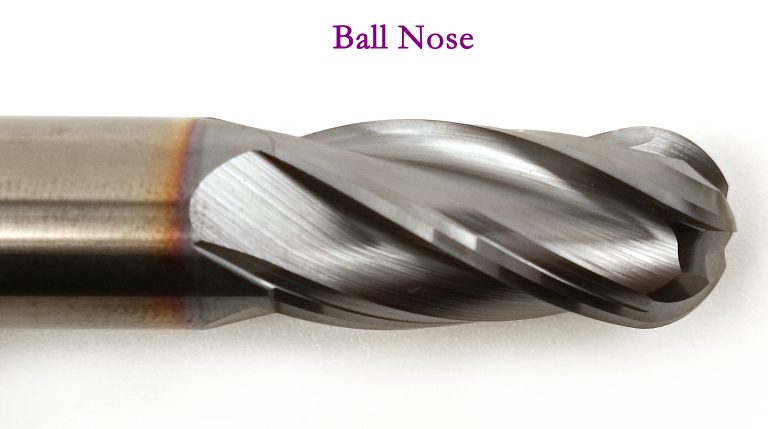Choice of saw blades for cutting aluminum
Choice of saw blades for cutting aluminum
Aluminum cutting saw blades are the most commonly used cutting tools for aluminum processing. The quality of carbide saw blades is closely related to the quality of processed products. The correct and reasonable selection of carbide saw blades is of great significance to improving product quality, shortening processing cycles, and reducing processing costs. Carbide saw blades include multiple parameters such as the type of alloy cutter head, material of the matrix, diameter, number of teeth, thickness, tooth shape, angle, aperture, etc. These parameters determine the processing capability and cutting performance of the saw blade. When selecting a saw blade, the saw blade should be selected according to the type, thickness, sawing speed, sawing direction, feeding speed, and sawing path width of the material being cut.
(1) Selection of cemented carbide types
Commonly used types of cemented carbide are tungsten-cobalt (code YG) and tungsten-titanium (code YT). Because tungsten-cobalt carbide has better impact resistance, it is more widely used in the wood processing industry. Commonly used models in wood processing are YG8-YG15. The number after YG indicates the percentage of cobalt content. As the cobalt content increases, the impact toughness and bending strength of the alloy increase, but the hardness and wear resistance decrease. It is necessary to Choose according to actual situation.
(2) Selection of matrix
1.65Mn spring steel has good elasticity and plasticity, economical material, good heat treatment hardenability, low heating temperature and easy deformation, so it can be used for saw blades with low cutting requirements.
- Carbon tool steel contains high carbon and has high thermal conductivity, but its hardness and wear resistance drop sharply when exposed to temperatures of 200°C-250°C. It suffers from large heat treatment deformation, poor hardenability, and long tempering time and is prone to cracking. Make economical materials for cutting tools such as T8A, T10A, T12A, etc.
- Compared with carbon tool steel, alloy tool steel has good heat resistance, wear resistance and better processing performance. The heat-resistant deformation temperature is 300℃-400℃, which is suitable for manufacturing high-grade alloy circular saw blades.
- High-speed tool steel has good hardenability, strong hardness and rigidity, and little heat-resistant deformation. It is an ultra-high-strength steel with stable thermoplasticity and is suitable for manufacturing high-end ultra-thin saw blades.
(3) Selection of diameter
The diameter of the saw blade is related to the sawing equipment used and the thickness of the workpiece being cut. The diameter of the saw blade is small, and the cutting speed is relatively low; the diameter of the saw blade is high, and the requirements for the saw blade and sawing equipment are high, and the sawing efficiency is also high. The outer diameter of the saw blade should be selected according to different circular saw machine models. Use a saw blade with a consistent diameter. The diameters of standard parts are: 110MM (4 inches), 150MM (6 inches), 180MM (7 inches), 200MM (8 inches), 230MM (9 inches), 250MM (10 inches), 300MM (12 inches), 350MM ( 14 inches), 400MM (16 inches), 450MM (18 inches), 500MM (20 inches), etc.
(4) Selection of number of teeth
The number of teeth of the saw teeth. Generally speaking, the more teeth there are, the more cutting edges can be cut per unit time and the better the cutting performance. However, more cutting teeth require more cemented carbide, and the price of the saw blade will be higher, but the saw teeth are too dense. , the chip capacity between the teeth becomes smaller, which can easily cause the saw blade to heat up; in addition, there are too many saw teeth, and when the feed rate is not matched properly, the amount of cutting per tooth will be very small, which will intensify the friction between the cutting edge and the workpiece, affecting the service life of the blade. . Usually the tooth spacing is 15-25mm, and a reasonable number of teeth should be selected according to the material being sawed. (5) Thickness Selection: Theoretically, we want the saw blade to be as thin as possible. The saw kerf is actually a kind of consumption. The material of the alloy saw blade base and the process of manufacturing the saw blade determine the thickness of the saw blade. If the thickness is too thin, the saw blade will easily shake during operation, affecting the cutting effect. When choosing the thickness of the saw blade, you should consider the stability of the saw blade and the material being cut. Some materials for special purposes also require specific thicknesses and should be used according to equipment requirements.
(6) Selection of tooth shapes. Commonly used tooth shapes include left and right teeth (alternating teeth), flat teeth, trapezoidal teeth (high and low teeth), inverted trapezoidal teeth (inverted conical teeth), and the rare industrial-grade triangular teeth. Left and right, left and right, left and right flat teeth, etc. - Ladder and flat teeth are the most widely used and the cutting is relatively smooth. It is suitable for cutting and cross sawing various soft and hard industrial aluminum profiles and aluminum alloy radiators.
- The flat-tooth saw edge is rough and the cutting speed is slow, so it is the easiest to grind. It is mainly used for grooving sawing with low cost. It is mostly used for aluminum saw blades with smaller diameters to reduce adhesion during cutting. It is used for grooving saw blades to keep the groove bottom flat.
- Trapezoidal teeth are a combination of trapezoidal teeth and flat teeth, and grinding is more complicated. In order to prevent adhesion, aluminum saw blades often use trapezoidal saw blades with a larger number of teeth.
- The left and right teeth are most commonly used for sawing aluminum rods and aluminum plates, and the sawing speed is fast.
To sum up, when sawing aluminum plates and aluminum rods, you should choose left and right teeth, which can sharply cut off the wood fiber tissue and make the cut smooth; in order to maintain a smooth groove bottom, use flat teeth or left and right combination teeth; industrial Aluminum profiles generally choose trapezoidal teeth.
(7) Selection of sawtooth angle
The angle parameters of the sawtooth part are relatively complex and the most professional, and the correct selection of the angle parameters of the saw blade is the key to determining the quality of sawing. The most important angle parameters are rake angle, back angle and wedge angle.
The rake angle mainly affects the force consumed in sawing wood chips. The larger the rake angle, the better the cutting sharpness of the saw teeth, the lighter the sawing, and the easier it is to push the material. Generally, when the material to be processed is soft, choose a larger rake angle, otherwise choose a smaller rake angle.
The angle of the saw teeth is the position of the saw teeth when cutting. The angle of the saw teeth affects cutting performance. The factors that have the greatest impact on cutting are rake angle γ, clearance angle α, and wedge angle β. The rake angle γ is the cutting angle of the saw teeth. The larger the rake angle, the faster the cutting. The rake angle is generally between 10-15°C. The relief angle is the angle between the saw teeth and the processed surface. Its function is to prevent friction between the saw teeth and the processed surface. The larger the relief angle, the smaller the friction and the smoother the processed product. The clearance angle of carbide saw blades is generally 15°C. Wedge angle is derived from rake angle and back angle. However, the wedge angle cannot be too small. It plays a role in maintaining the strength, heat dissipation and durability of the tooth. The sum of rake angle γ, relief angle α, and wedge angle β is equal to 90°C.
(8) Selection of aperture
The aperture is a relatively simple parameter, which is mainly selected according to the requirements of the equipment. However, in order to maintain the stability of the saw blade, it is best to use equipment with a larger aperture for saw blades above 250MM. The apertures of domestically designed standard parts are mostly 20MM holes with diameters of 120MM and below, 25.4MM holes with diameters of 120-230MM, and 30mm holes with diameters above 250. Some imported equipment also has 15.875MM holes. The mechanical aperture of multi-blade saws is relatively complex. Most are equipped with keyways to ensure stability. Regardless of the size of the hole, it can be modified through a lathe or wire cutting machine. The lathe can turn washers into the large hole, and the wire cutting machine can expand the hole to meet the requirements of the equipment.
A series of parameters such as the type of alloy cutter head, the material of the base body, diameter, number of teeth, thickness, tooth shape, angle, aperture, etc. are combined to form the entire carbide saw blade. It must be reasonably selected and matched to better utilize its advantages.

